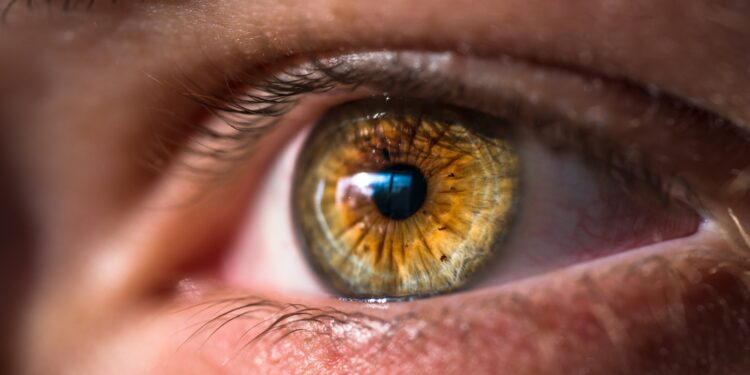Credit: UNSPLASH / CC0 public domain
Researchers at the Miami Miller University School of Medicine have identified molecular evidence connecting human papillomavirus (HPV) to thyroid eye disease (TED) by molecular mimetry involving HPV capsid proteins and autoimmune targets. High levels of antibodies against HPV appeared in participants with TED, suggesting a possible immunological connection influencing the development of the disease.
TED is marked by complex autoimmune characteristics and unclear triggers. The management of its various clinical manifestations remains a challenge. Symptoms include proportion, diplopia, pain, drought and redness. Serious cases can cause vision loss in 2% to 5% of patients. Among people with Graves’ disease, TED affects 25% to 50% and among those with Hashimoto thyroidite from 3% to 5%. TED also appears in people with euthyroidism and hypothyroidism, suggesting additional mechanisms beyond thyroid dysfunction.
Self-antibodies that update the Insulin (IGF-1R) growth factor receptor and the hormonal receptor stimulating thyroid (TSHR) were mainly involved. However, the cases of TED without thyroid dysfunction incited hypotheses involving molecular mimicry by pathogens. TED reports after an infection of the 2019 coronavirus disease (COVID-19) strengthened this theory and suggested that an infectious agent could trigger autoimmune responses.
In the study entitled “Human papillomavirus and thyroid eyes disease”, published in Jama ophthalmologyThe researchers conducted an experimental study to explore the potential involvement of viral infections in Ted pathogenesis.
Samples of orbital adipose tissue have been taken from 11 patients with orbital decompression surgery of TED and 11 witness patients undergoing blepharoplasty. Among the 22 patients, the average age was 58.6 years, ranging from 37.4 to 74.4 years. Patients represented 86.4% of the study population.
The researchers used the basic local alignment search tool accessible to the public (blast) provided by the National Center for Biotechnology Information (NCBI) to carry out an analysis of the Homology of Protein comparing IGF-1R and the TSHR with various viral proteome. The immunosorbent tests linked to the enzyme (Elisas) measured the human papillomavirus type 18 (HPV18) L1 Immunoglobulin G (IGG) from the samples of adipose tissue collected. Optical density readings (OD) from the IGG HPV18 L1 antibodies levels measured. OD values have been used to estimate the extent of the binding of detected antibodies.
The analysis revealed that IGF-1R and TSHR shared homologous sequences with major capside proteins from the Papillomaviridae family, as well as paramyxoviridae, herpesviridae, enterovirus, polyomaviridae and rhabdoviridae families. Two preserved patterns, FGXV and IXEXT + NP, were identified in all HPV serotypes and IGF-1R and Human TSHR sequences.
The average normalized OD levels for HPV18 L1 IGGs differ between groups. Witnesses had an average OD of 0.94. Patients with chronic TED had an average OD of around 2.31, and patients with acute active TED had an average OD of around 4.09. Chronic and acute active TED groups have shown higher normalized OD levels compared to witnesses, with an acute active TED displaying the highest levels.
No correlation has appeared between the levels of IGG L1 HPV18 and the hormone stimulating thyroid, free thyroxine or immunoglobulin levels stimulating the thyroid. Radioactive iodine treatment or thyroidectomy has not affected antibody levels. High IGG titles have appeared independently of treatment with the Teprotumumab.
Researchers have concluded that viral molecular mimicry between HPV and key targets of autoimmunity, IGF-1R and TSHR could contribute to the development of TED. High antibodies against HPV18 L1 capsid protein in PDP patients suggest a potential immunological mechanism influencing the pathogenesis of the disease.
The identification of viral mimicry as a possible factor offers new possibilities for prevention strategies and therapeutic approaches. Although the study cohort is small and does not establish causality, recognition of viral exposure as a contributing factor could guide diagnostic research and future treatment.
More information:
Ishita Garg et al, human papillomavirus and thyroid eyes disease, Jama ophthalmology (2025). DOI: 10.1001 / Jamaophtalmol.2025.0847
© 2025 Science X Network
Quote: Researchers find a link between HPV and thyroid eyes disease (2025, April 28) recovered on April 28, 2025 from
This document is subject to copyright. In addition to any fair program for private or research purposes, no part can be reproduced without written authorization. The content is provided only for information purposes.



